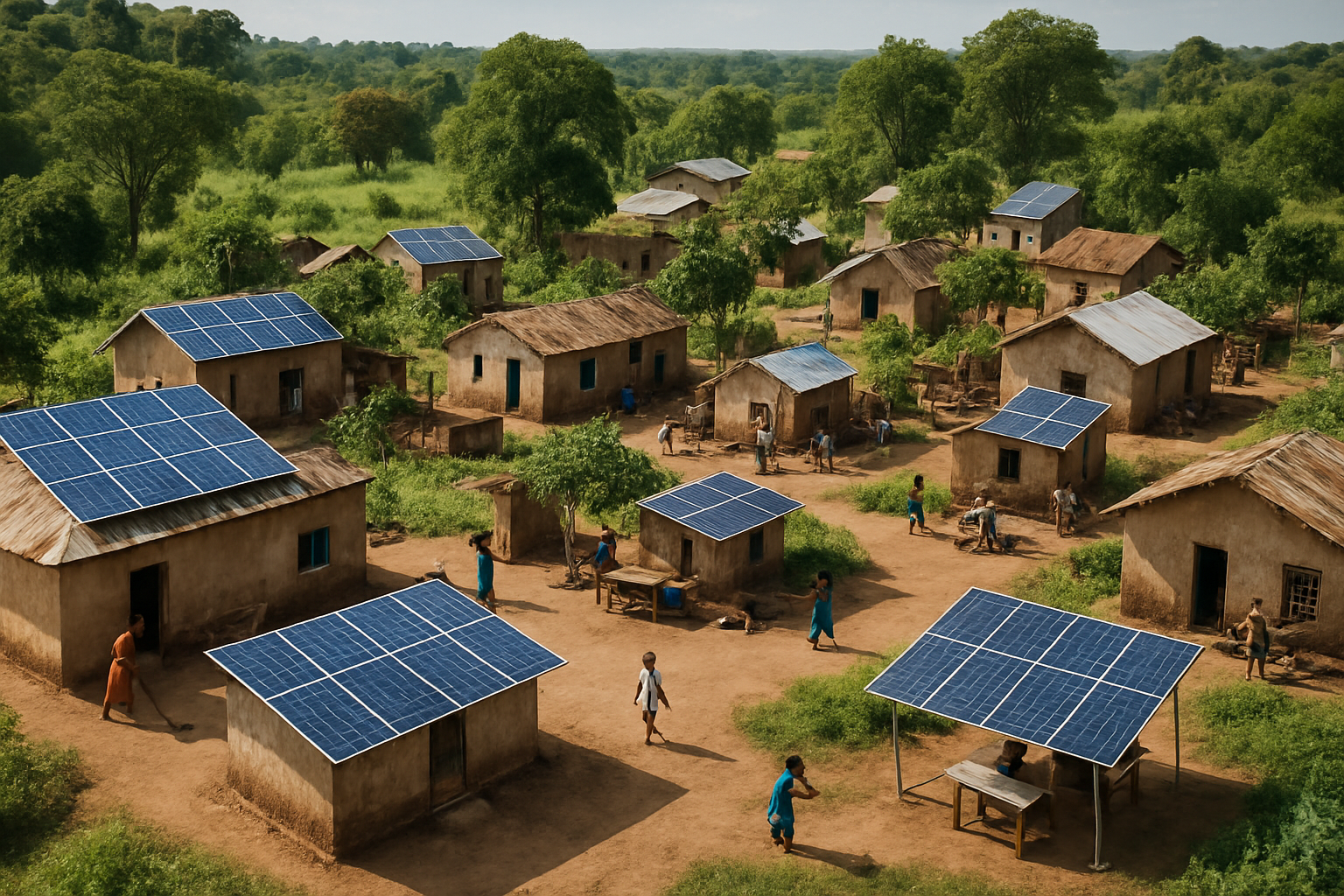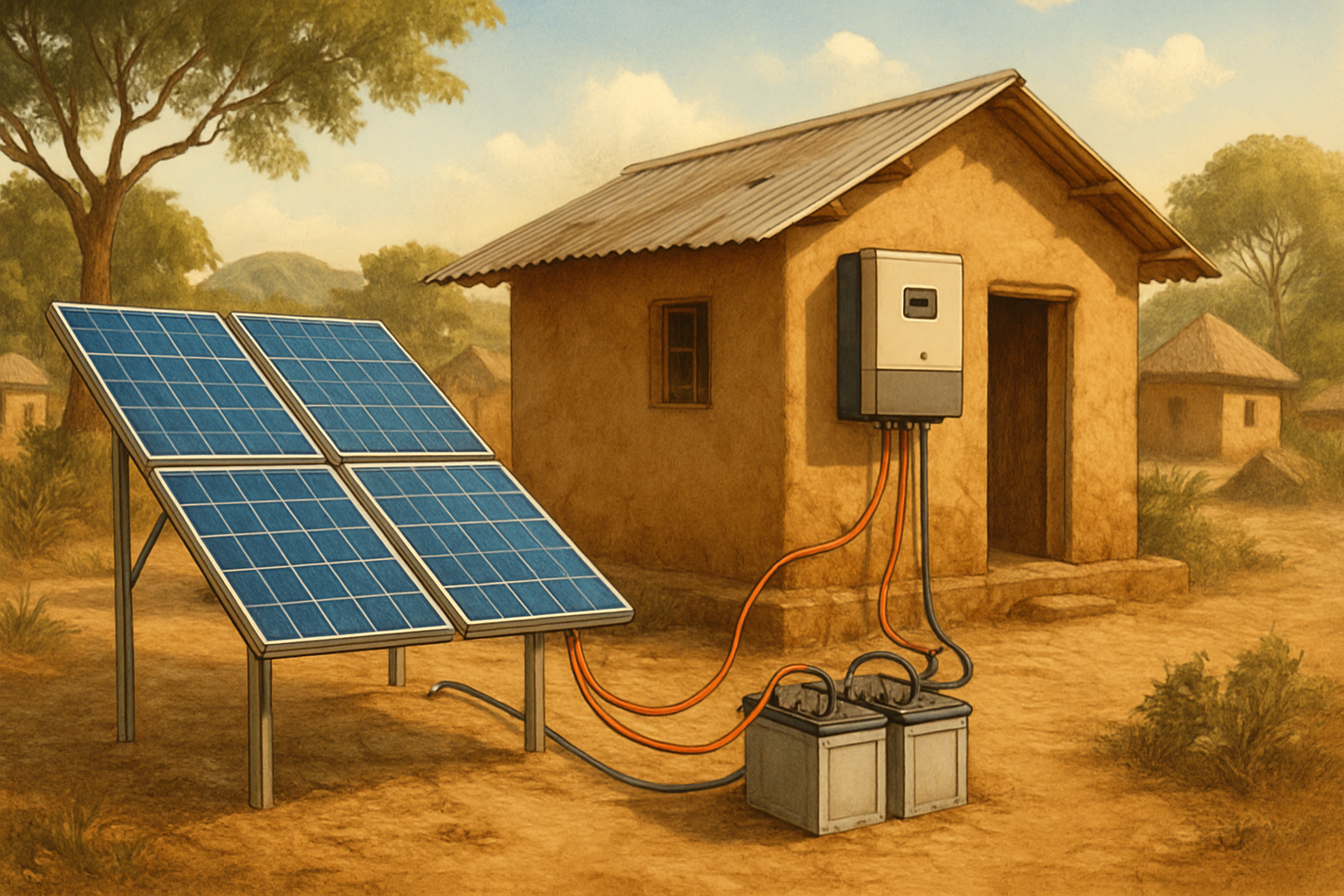Providing reliable electricity to remote communities without grid access presents unique challenges. While the technical solutions, such as off-grid solar microgrids integrating advanced lithium batteries and efficient inverters, are increasingly robust, securing the necessary funding remains a significant hurdle. This article explores various financing mechanisms—including grants, carefully structured tariffs, and flexible Pay-As-You-Go (PAYG) models—that empower the successful deployment and sustained operation of remote microgrids, fostering energy independence and local development.

Understanding the Remote Microgrid Landscape
The Need for Off-Grid Solutions
Many remote communities lack access to a centralized electricity grid. Extending traditional grid infrastructure to these areas often proves prohibitively expensive and logistically complex. Off-grid solar solutions, particularly microgrids, offer a decentralized and sustainable alternative. These systems typically combine solar photovoltaic (PV) panels with robust energy storage systems, often utilizing high-performance, safe, and reliable lithium iron phosphate (LiFePO4) batteries, alongside hybrid inverters to convert direct current (DC) into alternating current (AC) for household and community use.
Investment in power generation, particularly solar PV, has seen significant growth. In 2022, capital spending on new generation set records, largely driven by solar installations. China alone added over 100 GW of solar PV capacity, a nearly 70% increase from 2021. Europe, India, and Brazil also saw annual installations rise by 40% or more, despite inflation and supply chain issues.
Economic and Social Impact
Access to electricity from remote microgrids transforms lives. It enables economic activities, supports education through lighting for schools, and improves health outcomes by powering clinics and refrigerating medicines. From a financing perspective, these tangible benefits demonstrate a clear return on investment, attracting various forms of capital. The economic uplift in a community can also create a customer base capable of contributing to operational costs over time.
Grant Funding: Catalyzing Initial Investment
Grants play a crucial role in initiating remote microgrid projects, especially in regions with limited financial resources. They often cover the high upfront capital costs, making projects feasible where commercial financing might be challenging.
Sources of Grant Capital
Grant funding typically comes from a variety of sources:
- International Development Organizations: Institutions like the World Bank, United Nations agencies, and regional development banks often have programs dedicated to rural electrification and sustainable energy access.
- Government Programs: National and local governments may offer grants or subsidies to promote renewable energy deployment in underserved areas. For instance, the Inflation Reduction Act in the United States includes significant financial support for low-emission technologies, including tax credits for solar PV and storage. The European Union aims to increase renewables deployment to at least 42.5% of final energy consumption by 2030, with policies like the Net Zero Industry Act simplifying regulation and supported by existing funding channels.
- Non-Governmental Organizations (NGOs) and Philanthropic Foundations: Many NGOs focus on community development and energy poverty, providing grants for specific projects.
Navigating the Application Process
Securing grants requires a well-prepared application demonstrating project viability and impact. You should clearly articulate the project's goals, the technology chosen (e.g., the benefits of LiFePO4 batteries for longevity and safety), the community's needs, and a detailed budget. Highlighting the long-term sustainability plan, even if initial funding is grant-based, is also critical. Projects that align with national or international development goals, such as those promoting climate action or poverty reduction, often receive preferential consideration.
Tariff Structures: Ensuring Operational Sustainability
While grants help with initial investment, sustainable operation requires a revenue stream. Tariffs, or electricity fees, are central to covering ongoing maintenance, fuel (if a hybrid system), and future upgrades. Designing tariffs for remote microgrids demands a balance between cost recovery and affordability for end-users.
Designing Fair and Viable Tariffs
Effective tariff design considers several factors:
- Cost Recovery: Tariffs should ideally cover operational and maintenance (O&M) costs, administrative expenses, and potentially a portion of the capital cost or debt servicing. The Levelized Cost of Electricity (LCOE) for solar PV and wind increased in 2022, but remained more attractive than fossil fuel power for new generation in most markets.
- Affordability: The price of electricity must be affordable for the local community, reflecting their income levels and ability to pay. Overly high tariffs can lead to low adoption rates and non-payment.
- Transparency: Communities are more likely to accept tariffs they understand. Clear communication about how tariffs are calculated and what they cover builds trust.
- Tiered Pricing: Implementing tiered tariffs, where basic consumption is cheaper and higher consumption costs more, can encourage efficient energy use and ensure access for lower-income households.
Implementing and Managing Tariffs
Successful tariff implementation involves robust collection mechanisms and strong community engagement. This might include local payment agents, mobile money platforms, or smart meters that allow for prepayment. Community involvement in the tariff-setting process can lead to greater acceptance and compliance. Retail electricity pricing plays a role in guiding investment in distributed solar PV.
Pay-As-You-Go (PAYG) Models: Empowering End-Users
Pay-As-You-Go (PAYG) models have revolutionized access to off-grid solar in many remote areas. These models allow users to pay for electricity services in small, manageable installments, often via mobile phones, rather than requiring a large upfront purchase.
The Mechanics of PAYG
PAYG systems typically involve:
- Smart Metering: Devices that monitor energy consumption and can remotely enable or disable service based on payment status.
- Mobile Money Platforms: Users make payments through their mobile phones, which is convenient in areas with limited banking infrastructure.
- Lease-to-Own or Fee-for-Service: Under a lease-to-own model, users gradually pay off the system and eventually own it. A fee-for-service model means the energy service company (ESCO) retains ownership and provides electricity as a service. The International Energy Agency (IEA) highlights that ESCOs can own systems and provide energy services for a periodic fee, removing the maintenance burden from the end-user.
Benefits and Challenges of PAYG
PAYG offers significant advantages:
- Increased Accessibility: Lowers the barrier to entry for energy access, making solar power affordable for more households.
- Reduced Financial Risk: Spreads the cost over time, reducing the financial burden on individual users.
- Scalability: Allows providers to scale operations more easily by managing cash flow and customer relationships digitally.
However, challenges exist. Managing a large customer base, ensuring reliable payment collection, and addressing potential technical issues in remote locations require robust operational systems. The high cost of capital and limited access to funds can exacerbate investment challenges in developing regions, making innovative financing models like PAYG even more critical.
Integrating Financing Strategies for Long-Term Success
The most effective remote microgrid projects often combine multiple financing strategies, leveraging the strengths of each to create a sustainable funding ecosystem.
Blended Finance Approaches
Blended finance combines concessional funding (like grants) with commercial capital (like loans or equity investments). Grants can de-risk projects for commercial lenders, making them more attractive to private investors. For example, an initial grant might cover 30% of the capital cost, while the remaining 70% is financed through a commercial loan or PAYG revenue streams. This approach accelerates deployment and ensures long-term viability.
Risk Mitigation and Investor Confidence
Investors seek certainty. Robust regulatory frameworks, clear policies, and mechanisms for risk mitigation enhance investor confidence. This includes power purchase agreements (PPAs) that guarantee revenue streams, government guarantees for loans, and political risk insurance. Policies that support renewable energy investments, such as tax credits for production (PTC) or investment (ITC), can also significantly influence financial decisions. However, it is important to note that ITCs run the risk of supporting low-productivity investments.
Non-Investment Advice Disclaimer: This article provides general information and does not constitute financial or investment advice. You should consult with a qualified financial professional before making any investment decisions.
The Path Forward for Remote Energy Access
Financing remote microgrids requires a multifaceted approach, blending initial catalytic funding with sustainable revenue models. By strategically combining grants, well-designed tariffs, and innovative PAYG systems, we can unlock the potential of off-grid solar to deliver reliable, scalable energy solutions to communities worldwide. This empowers energy independence, drives economic growth, and improves quality of life for millions, fulfilling the promise of sustainable development.
Frequently Asked Questions
What are the primary benefits of remote microgrids?
Remote microgrids offer reliable, decentralized electricity access, fostering economic development, improving educational opportunities, and enhancing health services in areas without traditional grid connections. They promote energy independence and reduce reliance on fossil fuels.
How do Pay-As-You-Go models make electricity more accessible?
PAYG models allow users to pay for electricity in small, flexible installments, often via mobile money. This eliminates the need for large upfront payments, making solar energy affordable for a wider range of households in remote communities.
What role do grants play in financing remote microgrids?
Grants are crucial for covering the high initial capital costs of microgrid projects, especially in underserved regions. They de-risk projects, making them more attractive for subsequent commercial financing and accelerating deployment.
What factors influence the design of microgrid tariffs?
Tariff design balances cost recovery for operational expenses and maintenance with affordability for end-users. Factors include local income levels, transparency in pricing, and the potential for tiered pricing structures to encourage efficient energy use.





Leave a comment
All comments are moderated before being published.
This site is protected by hCaptcha and the hCaptcha Privacy Policy and Terms of Service apply.